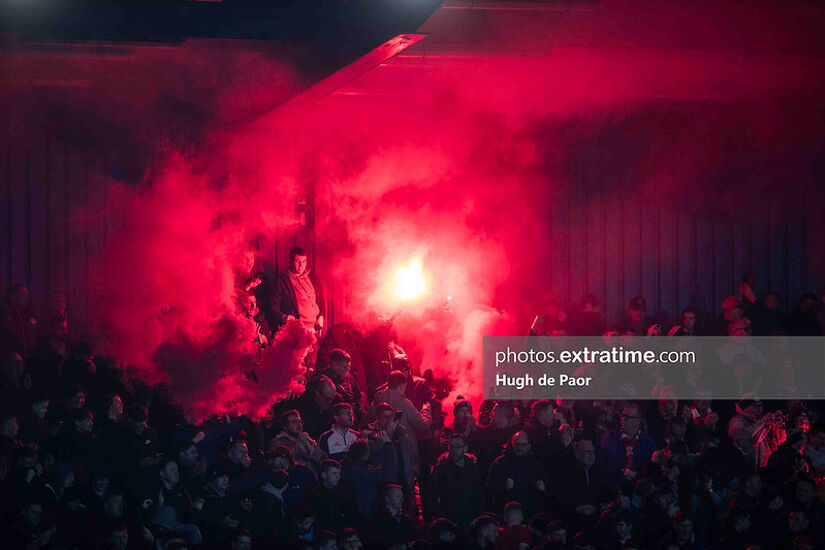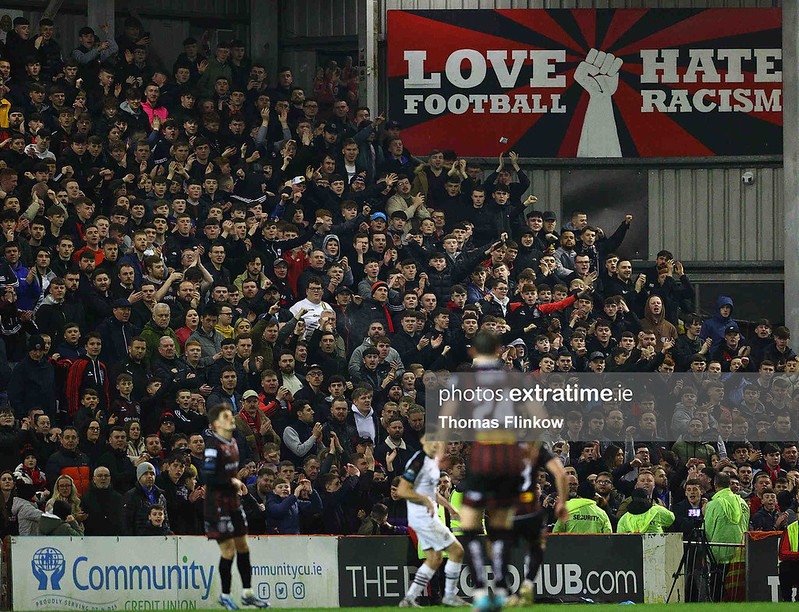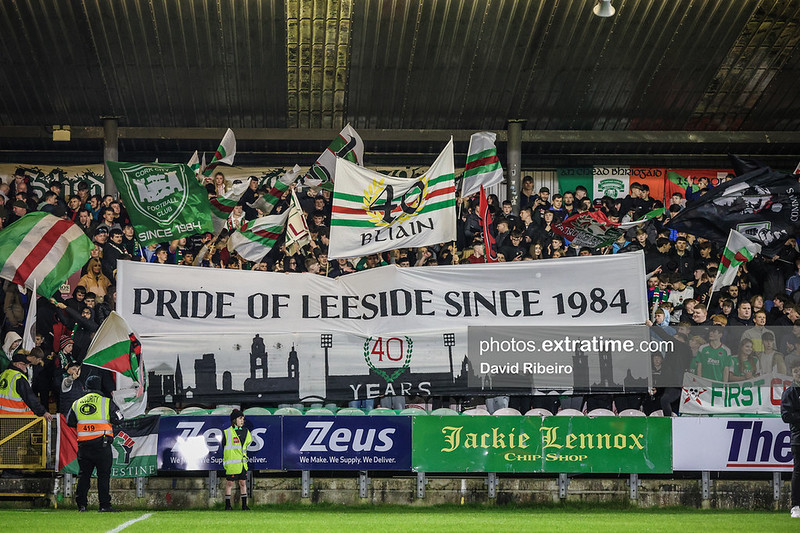LOI Attendances 2024 - Growing pains in the League of Ireland's increase in popularity

The crowd in the RSC on opening night Credit: Hugh de Paor (ETPhotos)
For many years, at the close of the first gameweek in the League of Ireland season, I've made it a tradition to write about the attendances at the games, noting those that were disappointingly low or impressively high.
Since the lifting of COVID restrictions—and even during the period leading up to their creation—the League of Ireland has experienced a surge in interest, one that defies a single explanation. It's been a confluence of favourable circumstances, a veritable perfect storm of positive factors.
This season, I've been approached by individuals whom I'd never peg as league followers, enquiring about the possibility of securing tickets to the matches. There's a palpable anxiety over whether they'll be able to attend one of the fixtures over the weekend, a concern that speaks volumes about the growing allure of the league.
The opening weekend of the Premier Division featured matches at five venues: Dalymount Park, Ryan McBride Brandywell Stadium, Eamonn Deacy Park, the RSC, and Tallaght Stadium.
For the analysis in this article, I've used the maximum capacities listed on the clubs' websites and Wikipedia as reference points.
Shamrock Rovers boasted the highest attendance, drawing 7,610 fans. They were followed by Bohemians with 4,432, Waterford with 4,390, Galway United with 4,094, and finally Derry City with 3,300 spectators.
The critical insight from these numbers is the narrow margin to full capacity—if the stated maximum capacities hold true, only an additional 3,857 seats could have been filled in the Premier Division this weekend, the majority of those (2,390) based on the fact Tallaght can now hold up to 10,000.
The nearly complete sell-out of the initial matches in the top tier marks a milestone in fan engagement, a phenomenon worthy of celebration. Yet, it also introduces a new concern that merits attention.

Before delving into this unexpected cause for worry, let's turn our attention to the First Division.
As expected, the attendance figures in the lower tier of Irish domestic football were less remarkable.
Cork City led the pack, as is often the case, with an impressive turnout of 5,507 fans.
Treaty United attracted a respectable crowd of 1,926, while Longford Town's Saturday game drew a decent attendance of 1,607.
Athlone Town's audience fell below the 1,000 mark, recording 834 spectators, and Bray Wanderers' match against UCD saw the weekend's smallest gathering of 780.
Applying the maximum capacity metric again to the First Division, we find that out of the available seats, 14,628 remained unfilled, with only 10,654 being occupied. This presents a stark contrast to the nearly full houses seen in the Premier Division.
In addition, Cork City's contribution stands out, as their attendance accounted for 52% of the First Division's total.

When we combine the attendance figures from both divisions, it emerges that 34,480 spectators attended the games, filling seats out of a total of 52,965 available.
Before delving further into the analysis, it's important to acknowledge that only half of the league's clubs have hosted a home game thus far.
Yet, if historical patterns hold true, the entrance of Shelbourne, St. Pats, Drogheda United, Dundalk, and Sligo Rovers into the Premier Division's home game schedule is unlikely to alter the promising trajectory of the attendance figures.
In contrast, the First Division faces a more challenging scenario. The remaining five clubs in this tier may find it difficult to sustain the first week attendance total, especially without the significant draw that Cork City typically provides.
The increase in popularity for the League of Ireland, undeniably a positive development, brings to light two significant concerns that need to be addressed to sustain and build upon this momentum.
First, the Premier Division faces a critical challenge: the potential loss of revenue due to its inability to meet the growing demand for match tickets.
With facilities and infrastructure now posing a real threat to clubs' increasing profitability, the issue of inadequate grounds, long acknowledged within the league, has shifted from being a deterrent to attendance to a barrier preventing fans from attending matches.
The solution—enhancing or relocating grounds—is not a quick fix. It demands time and strategic planning, but it's essential for the league's growth and the capitalisation on its current popularity.
Second, the disparity between the Premier and First Divisions has become more pronounced.
The First Division, lagging in terms of attendance and engagement, represents an area ripe for development.
It's imperative for the League of Ireland to leverage the heightened interest in domestic football and implement strategies aimed at boosting attendance figures for the First Division.
Elevating the lower tier's profile and drawing more fans to its matches is crucial for the overall health and balance of domestic football in Ireland.
The impressive attendance figures witnessed this week in the League of Ireland serve as a testament to the league's growing appeal.
However, this success should not lead to complacency but rather be viewed as the beginning of a critical phase that demands diligent effort and strategic planning.
The league faces a new challenge: the imperative to build on its current momentum and address the long-standing issue of inadequate facilities, which now risks losing potential revenue and hindering further growth.
This situation underscores the necessity for the league and its clubs to proactively prepare for a future where the popularity of domestic football in Ireland continues to rise.
The path forward involves not just celebrating current achievements but engaging in the hard work required to ensure that the league can accommodate its expanding fan base and capitalise on its newfound popularity.
FIGURES
| Year | Total Att | Average Att | Division(s) |
|---|---|---|---|
| 2017 | 17,040 | 2,492 | Both Divisions |
| 2018 | 14,460 | 2,892 | Premier Division Only |
| 2019 | 17,792 | 3,558 | Premier Division Only |
| 2020 | 15,737 | 3,147 | Premier Division Only |
| 2023 | 30,221 | 3,022 | Both Divisions |
| 2024 | 34,480 | 3,448 | Both Divisions |
Note: The years 2018, 2019, and 2020 figures pertain exclusively to the Premier Division, while the 2017, 2023, and 2024 figures encompass both the Premier and First Divisions.
| Teams | Attendance |
|---|---|
| Shamrock Rovers vs. Dundalk | 7,610 |
| Cork City vs. Kerry FC | 5,507 |
| Bohemians vs. Sligo Rovers | 4,432 |
| Waterford vs. Shelbourne | 4,390 |
| Galway United vs. St Patrick's Athletic | 4,094 |
| Derry City vs. Drogheda United | 3,300 |
| Treaty United vs. Cobh Ramblers | 1,926 |
| Longford Town vs. Finn Harps | 1,607 |
| Athlone Town vs. Wexford | 834 |
| Bray Wanderers vs. UCD | 780 |

